 |
 |
 |
| |
TMC-114 Resistance Profile
|
| |
| |
Reported by Jules Levin
13th CROI
Denver, Feb 5-8, 2006
there are several key take-home messages for patients from this study:
-- TMC-114 is a potent protease inhibitor, particularly useful for patients with resistance to protease inhibitors, and apparently for patients with resistance to tipranavir.
-- TMC-114 can be expected to be effective for many patients with extensive protease inhibitor and treatment experience.
-- this study shows certain protease mutations that appear to have some effect in reducing response to TMC-114
-- of note, Tipranavir appears effective for patients who had a viral load rebound to TMC-114
-- The FDA is reviewing approval of TMC-114 now and by about June notification should become available.
In this study Tibotec researchers report the resistance profile of TMC-114, the PI mutations at baseline & that emerge on TMC-114 therapy that reduce virologic response rates. But Tibotec researchers report they took a conservative approach, using a response rate of 33% as a cutoff. So patients in study who as a group had <33% response rate (<50 c/ml) were the ones for whom they defined as not achieving response, and so they reported the PI mutations these patients had at baseline or on TMC-114 that appear associated with not achieving the desired response compared to patients in group who achieved 44% response rates. If you read the full report below slowly the results of this study will become more clear.
"Effect of baseline susceptibility and on-treatment mutations on TMC114 and control PI efficacy"
in POWER 1, 2, and 3
S De Meyer, A Hill, I De Baere, L Rimsky, H Azijn,
B Van Baelen, E De Paepe, T Vangeneugden,
E Lefebvre and MP de Bethune
In the last major oral session Wednesday, the last day of CROI, several important presentations were made including this one regarding TMC-114 ressistance, the effect of mutations on response to TMC-114 in the POWER I & II studies, and a presentation on response to TMC-125 and the effect of resistance to response.
Author Conclusions
TMC114/r demonstrates a significant efficacy benefit over CPI in treatment-experienced patients, even when CPI susceptible at BL
TMC114 rebounders have no increase in Tipranavir FC
Number of BL mutations associated with diminished response
-- >/= 10 PI resistance-associated mutations; response seen in patients with up to 9 PI mutations at baseline
-- TMC114/r response still higher than that of CPI
BL mutations associated with diminished response:
V11I, V32I, L33F, I47V, I50V, I54L, I54M, G73S, L76V, I84V and L89V
-- presence associated with a higher number of PI mutations
-- TMC114/r response still higher than that of CPI
Developed mutations in ≥10% virologic failures
V32I, L33F, I47V, I54L and L89V
In vitro: mutations V32I, L33F, I47V and I54L alone or in combination with 1 or 2 mutations
-- no decreased susceptibility to TMC114 (FC <10)
-- may need higher number of mutations to decrease TMC114 susceptibility
Presentation objectives
Compare Week 24 virologic response to TMC114/r with that of susceptible and resistant control PIs (CPIs) in POWER 1 and 2.
Demonstrate the effect of baseline (BL) susceptibility and on-treatment mutations on TMC114 efficacy.
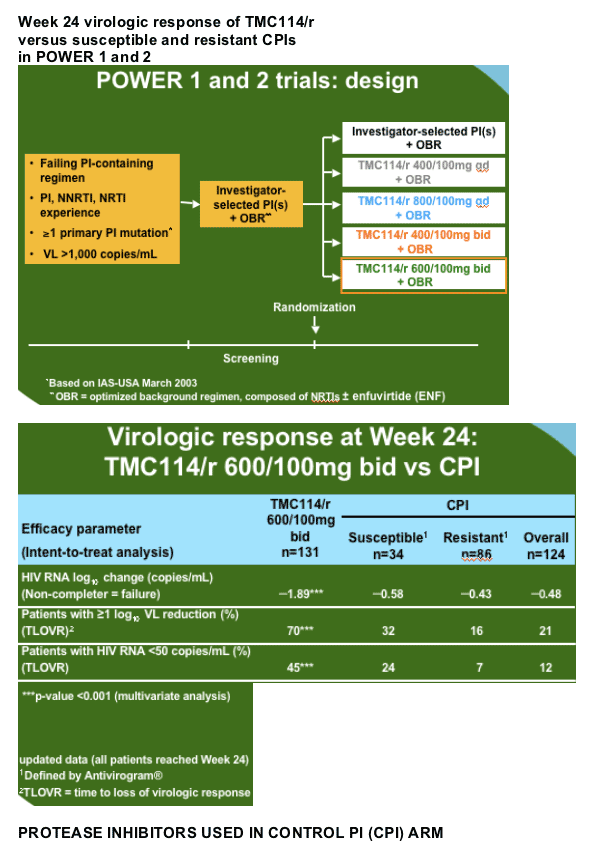
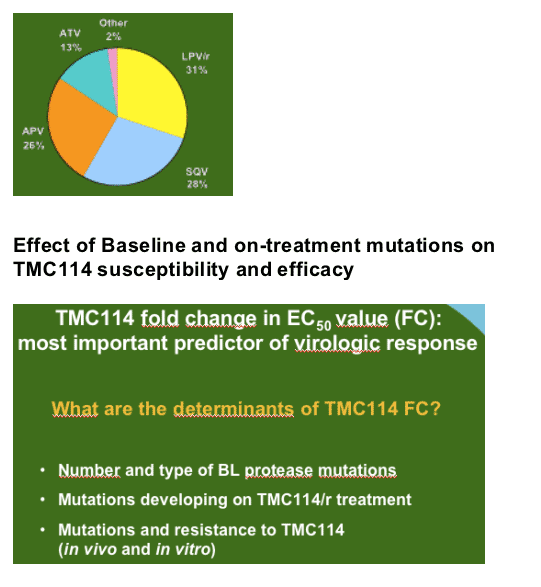
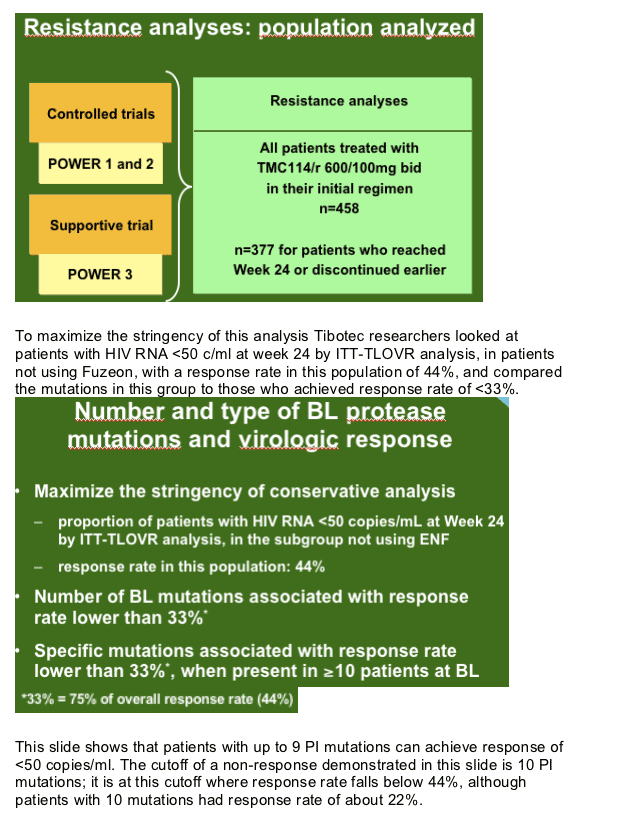
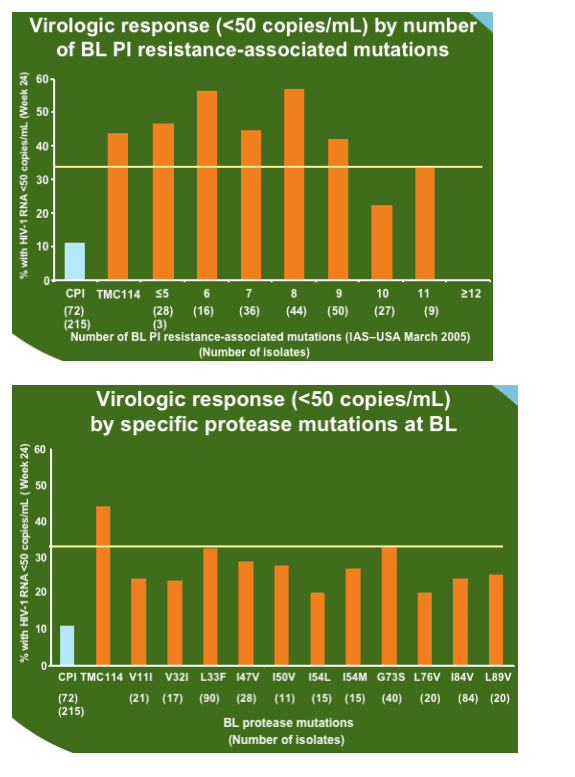
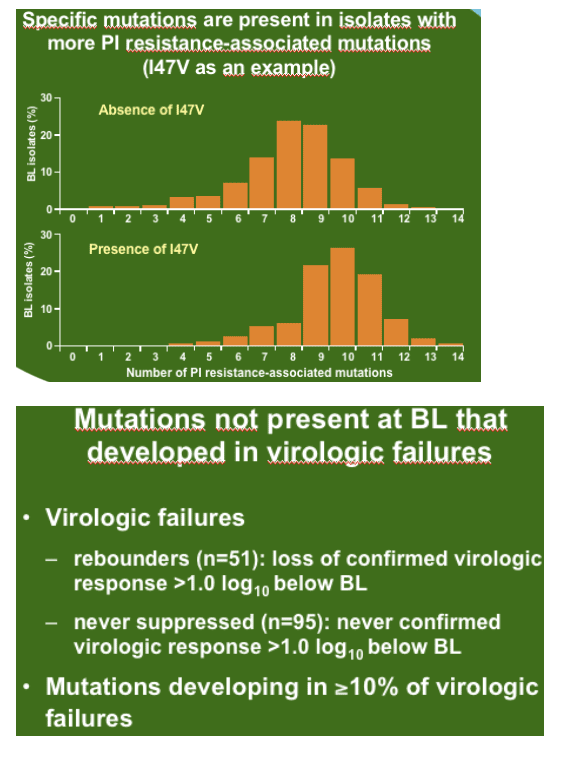
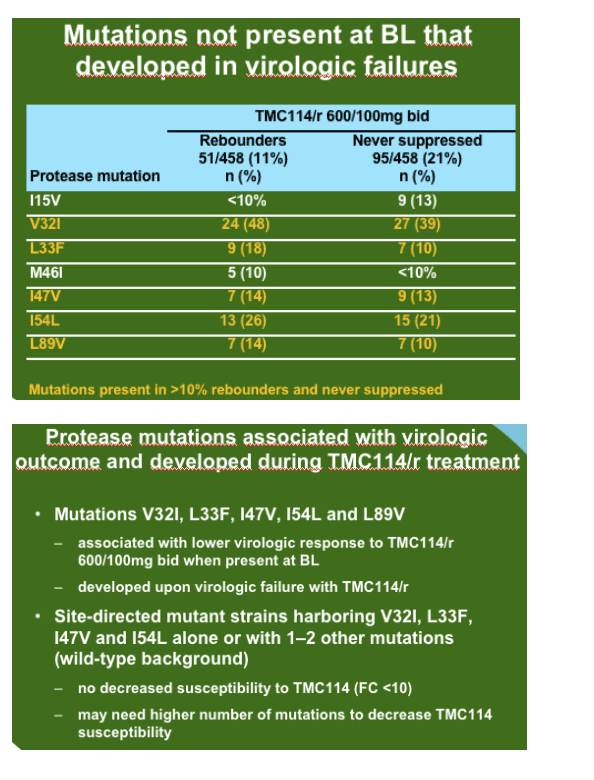
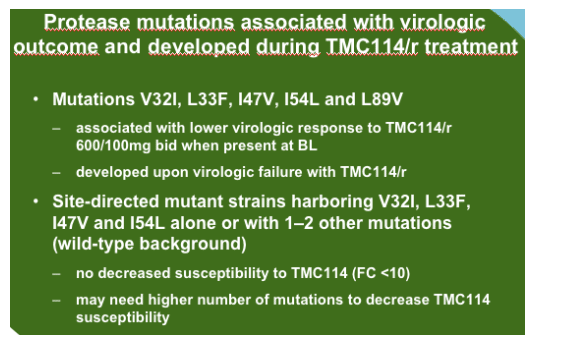
|
|
| |
| |
|
 |
 |
|
|